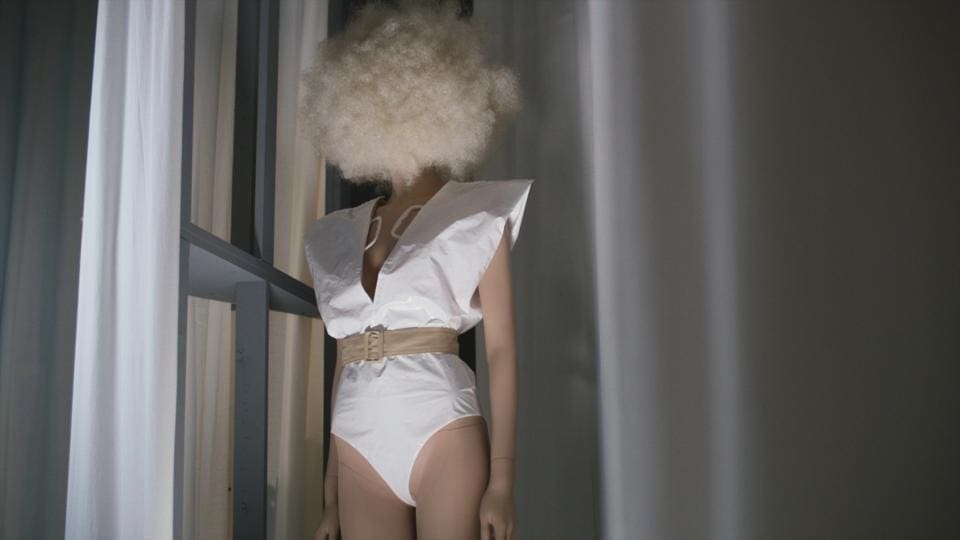When it comes to fashion, names like Yves Saint Laurent and Jean Paul Gaultier are synonymous with Parisian style. But what about Maison Margiela?
It doesn’t exactly ring a bell, so to speak, at least with those outside of the clique that has come to be the fashion world. Until now. A new documentary called Martin Margiela: In His Own Words attempts to demystify the Belgian designer who refuses to show his face to the world.
What’s peculiar is that Margiela’s face is hidden from the entire documentary, living up to his ‘Banksy of fashion’ status. It’s basically an in-depth tour through this designer’s childhood, old belongings, boxes of old design work from the 1990s and 2000s. Through his decades-long career, we get to hear his voice as the narrator through his notes, drawings and observations on society.
There are interviews with Jean Paul Gaultier, Carine Roitfeld among others, in this doc, honoring the genius behind his decades long career. But why remain anonymous? It’s a story told through his hands and voice, as the director, Reiner Holzemer worked around the designer’s wishes to remain anonymous.
How did you manage to get to make this film about Martin Margiela? Talk about a rare opportunity.
Reiner Holzemer: I went through people who knew him, and he trusted them. First, through the fashion historian Olivier Saillard, then a few others. They recommended him to meet me, and I told Martin: “I would love to do a documentary.” He said he wanted someone to shoot the exhibition he was preparing right now, which was at the Maison Galliera in Paris. I thought, ‘once we are in touch, maybe he’d be interested in doing more.’ That’s how it happened, more or less. We started shooting at the Palais Galliera and step by step became closer to making the documentary.
You filmed him going through boxes in his archive, what’s the story behind those shots?
It was in his studio and apartment in Paris. It looks like the showroom of Maison Margiela when they started, everything was painted white. He kept all his childhood drawings and dolls. Over lunch, I asked him: “Why did you become a fashion designer?” He said: “That’s simple, I saw a documentary on TV about a fashion designer and asked my mom, what’s this?” She said: “It’s a Paris fashion designer.” He decided he wanted to do that. I told him: “That’s so unique, we should put your childhood in the documentary.” Martin told me it’s too private, “I only want to talk about my career as a fashion student in Antwerp.” Then, he talked to his mother, who kept all his childhood drawings and early lookbooks, so it became a journey into his past he never did before. It was a surprise.
For the uninitiated, what is Margiela’s contribution to fashion?
He went his way without compromise. He said his everyday goal with Maison Margiela was to create something that has never been seen before. He really did that and that’s quite an achievement. He was the first, one of the first, who worked with secondhand clothes. He also changed the whole silhouette of the period, shoulders were wide, skirts were short. Everything became narrow in the 1990s thanks to him. He has been copied so many times.
How did Margiela change the runway?
He changed how fashion shows looked, as Paris Fashion Week shows were always in the neighborhood of the Louvre, but he went to the outskirts of Paris, went to empty parking garages. There was no VIP front row, he said: “First come, first serve.” There was no hierarchy in terms of the audience. Now, fashion week is held all over Paris.
And yet, he isn’t known by a mainstream audience?
Probably because he remained anonymous. All the designers know him, but not outside the fashion world. If your name isn’t in the news anymore, you’re quickly forgotten. That’s the destiny of someone who works in fashion. Its all about the latest season in the public eye.
Do you think Martin Margiela will return to fashion?
No, he’s really happy right now as he is doing painting and sculpture, he’s planning on having an exhibition in Paris in the fall. He doesn’t have to follow seasons or pressure from the fashion industry anymore
How hard was it to keep the designer’s wish to be anonymous?
It was clear from the beginning he wanted to remain anonymous. I was never afraid of that. I wanted to have him talk about his career, he never did that. For 30 years, he didn’t allow any interviews, no photos of him, this was a unique situation. I knew I couldn’t show his face, but I could still make a documentary about him. I wanted at least his voice in it.
His hands become instrumental to the storytelling?
On the first two shooting days, I only watched him, I didn’t ask any questions and let him do what he needed to do. His hands became central on the first shooting day, I operated the camera myself to keep it intimate. I became fascinated by his hands, the movements. He has touched thousands of fabrics and garments. The hands have an emotional character, they reflect his feelings, many times when he’s talking. Many people thought, how can you make a film with such a condition? But I think it worked. Nobody so far said: “But I missed the face.” They had the feeling they became close to him. That was the goal from the very beginning, to make it personal, not just a fashion movie.

